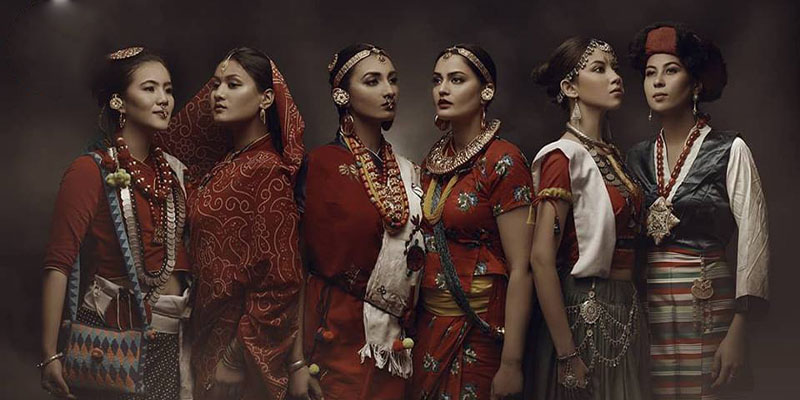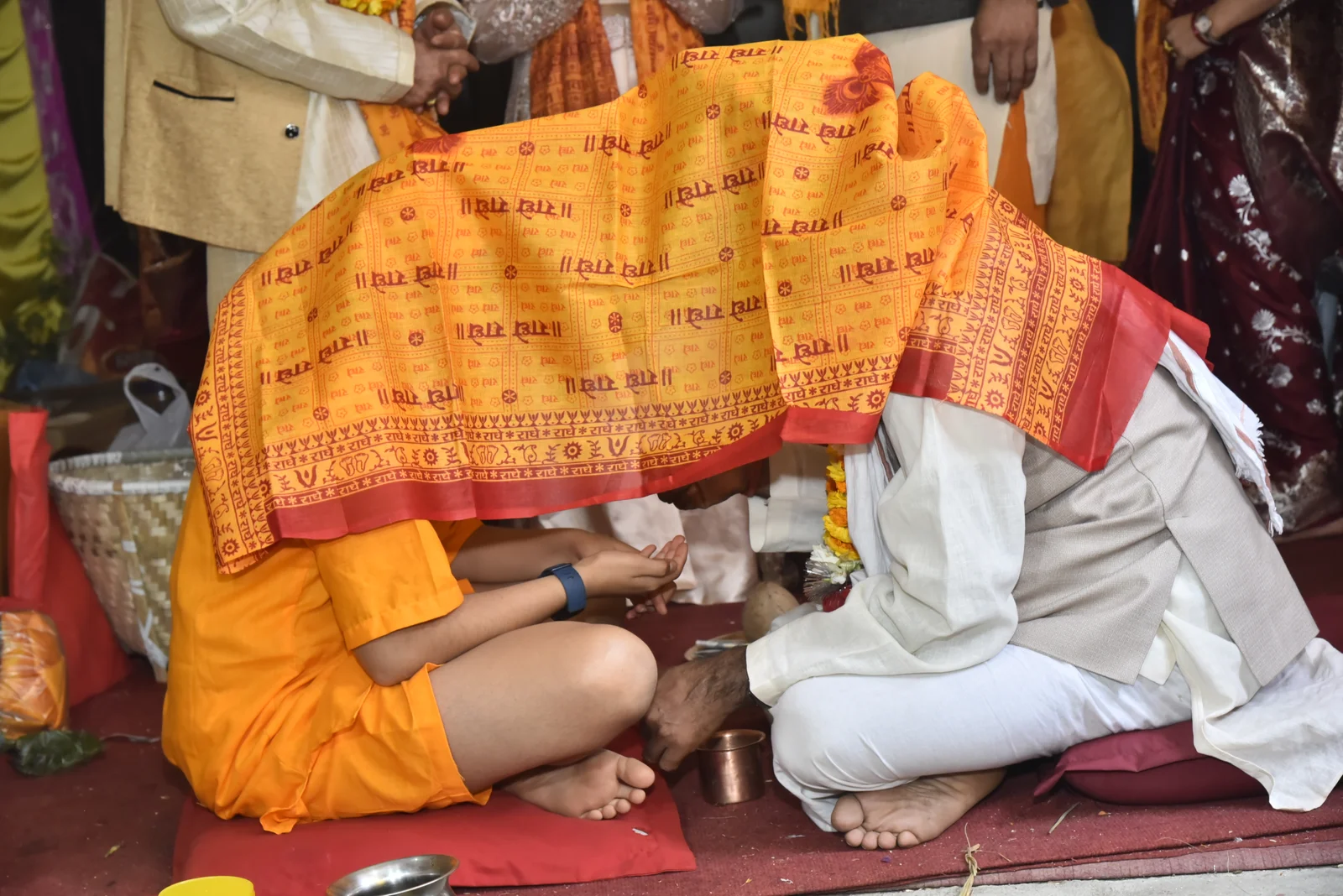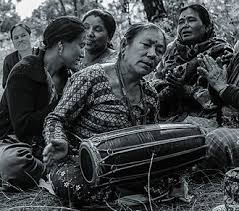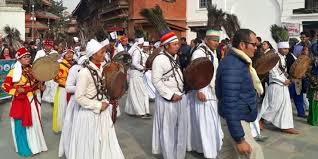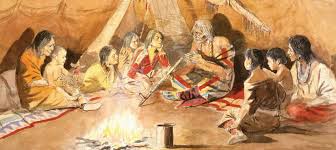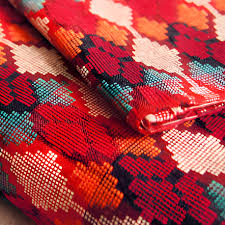Share this Article
Teej is one of the most significant and vibrant festivals celebrated by women in Nepal. It is a time of devotion, reflection, and joy, where women come together to honor their marital bonds, spiritual commitments, and the strength of womanhood. Traditionally observed by Hindu women, Teej holds cultural, religious, and social significance, and has evolved to become a celebration of women’s solidarity, empowerment, and resilience.
Teej is celebrated with great enthusiasm, especially in the Terai and hilly regions of Nepal, and is observed according to the lunar calendar, typically falling in the months of August or September. The festival spans several days, each marked by different customs and rituals that emphasize devotion to Lord Shiva, the well-being of husbands, and the importance of community.
Origins and Religious Significance of Teej
Teej has deep religious roots in Hindu mythology, with the most popular story being centered around the goddess Parvati and her devotion to Lord Shiva. According to legend, Parvati performed severe penance for years to win Shiva as her husband. On the occasion of Teej, Parvati is said to have celebrated the union with Shiva, and in doing so, she was blessed with eternal marital happiness.
The festival symbolizes the triumph of devotion and perseverance in the pursuit of one’s goals. Women, especially married ones, observe Teej to seek Lord Shiva’s blessings for a long, healthy life for their husbands and prosperity for their families. For unmarried women, the festival is a prayer for an ideal partner, just as Parvati had wished for.
The Days of Teej
Teej is not just a single day of celebration, but rather a multi-day festival filled with rituals, fasting, and joyous gatherings. The major days of Teej are:
1. First Day: Fasting and Rituals
The first day of Teej marks the beginning of the festival and is often dedicated to fasting and purifying the mind and body. Women fast from sunrise to sunset, abstaining from food and water, as a gesture of devotion to Lord Shiva and the goddess Parvati. The fast is observed with the hope of seeking blessings for the well-being of their husbands or future husbands.
-
Khadke: Women prepare a special set of offerings for the gods, which include fruit, sweets, and flowers. These offerings are placed on a sacred platform or altar, and prayers are offered to invoke divine blessings.
-
Puja (Prayer Rituals): A significant part of the first day is the Teej Puja, which involves worshiping Lord Shiva and Parvati. Women dress in red, green, or yellow saris, and gather to perform rituals at temples or at home. The puja is accompanied by chants, prayers, and offerings.
2. Second Day: The Main Teej Celebration
The second day of Teej is the most significant and festive. It is characterized by vibrant celebrations, joyous music, and communal gatherings, especially in the Terai region. On this day, women celebrate by coming together in large groups, dancing to traditional folk songs known as Teej songs, and sharing meals.
-
Dancing and Singing: Women gather at homes, temples, or open spaces, where they sing traditional songs about women’s experiences and the beauty of life. The music is usually accompanied by the beat of traditional drums. The lively Teej dance is an expression of happiness, celebrating womanhood and the bond of sisterhood.
-
Gatherings and Community Bonding: Women dress in red attire and adorn themselves with jewelry. They share food, sweets, and gifts with one another, strengthening their communal ties. The festivities are also a time for women to support one another, exchanging words of encouragement, wisdom, and solidarity.
3. Third Day: Returning Home and Feasting
The third day of Teej marks the end of the fasting period. After days of spiritual fasting and devotion, women break their fast with a special feast, often including traditional Nepali delicacies such as sel roti (a ring-shaped rice doughnut), dahi chiura (yogurt and beaten rice), chana (chickpeas), and other sweet treats. This feast is celebrated in the company of family and friends.
-
Visiting Parental Homes: It is also customary for married women to visit their parental homes during the third day of Teej, where they are welcomed with much joy and celebration. This is often seen as a time to reconnect with their roots and receive the blessings of their parents.
The Rituals and Symbols of Teej
Teej is rich in symbolism, with its rituals representing devotion, love, and renewal. Here are some key aspects of the rituals and symbols associated with the festival:
1. Red and Green Attire
On the day of Teej, women typically wear bright red or green saris or outfits, as these colors are symbolic of prosperity, love, and fertility. Red is particularly significant because it represents marital bliss and good fortune.
2. Fasting and Abstinence
The fasting that accompanies Teej symbolizes the commitment of women to seek divine blessings for their husbands' long lives. The fast is also a way of purifying the mind and body and is a physical representation of the devotion and discipline of the women.
3. Sel Roti and Sweets
Sel roti, a traditional homemade rice doughnut, is a common offering during the Teej festival. It is symbolic of sweetness, unity, and the cyclical nature of life. The distribution of sweets and treats during Teej reflects the shared joy and festive spirit of the celebration.
4. Teej Songs
The songs sung during Teej are filled with profound cultural and emotional significance. They recount stories of womanhood, devotion, and longing for the well-being of their families. These songs often reflect themes of love, separation, and happiness and are passed down through generations, helping to preserve the cultural identity of Nepalese women.
The Social Significance of Teej
Teej is not only a religious festival but also a celebration of womanhood. The rituals are deeply ingrained in the cultural psyche of Nepalese women, emphasizing the importance of family, love, and devotion. However, the festival has also evolved to become a platform for recognizing women’s strength and resilience in Nepali society.
-
Women’s Solidarity: Teej has become an occasion for women to come together, offering support and encouragement for one another. It highlights the importance of female solidarity, empowerment, and collective well-being.
-
Social Empowerment: In recent years, there has been a growing trend of women using Teej as a platform to raise awareness about women’s rights, gender equality, and social issues. During the celebrations, women sometimes engage in conversations and activities that promote women’s welfare and gender justice.
Teej and Modern Changes
While Teej continues to be celebrated with its traditional rituals, the festival has also evolved in response to the changing roles of women in modern society. Urbanization, education, and social activism have brought new perspectives to how Teej is observed. Many women now use the festival as an opportunity to address social issues, raise awareness about gender equality, and support one another in navigating the challenges they face.
-
Modern-Day Teej Celebrations: In urban areas, the celebrations have adapted to include professional gatherings, cultural performances, and discussions about women's empowerment. Additionally, women have expanded the scope of Teej celebrations to include broader social causes, while still honoring the traditions of the festival.
Conclusion
Teej is a celebration that beautifully intertwines spirituality, culture, and social values. It is a day to honor the sacred bond between husband and wife, to celebrate the strength and devotion of women, and to reflect on the power of community and sisterhood. As women continue to play a critical role in shaping Nepali society, Teej stands as a testament to their enduring strength, resilience, and importance in the fabric of Nepalese culture. Whether in its traditional form or through new expressions of social awareness, Teej remains an essential celebration of womanhood and devotion in Nepal.
Categories:
History & Heritage
,
Lifestyle & Local Life
Tags:
tradition
,
Local Life

